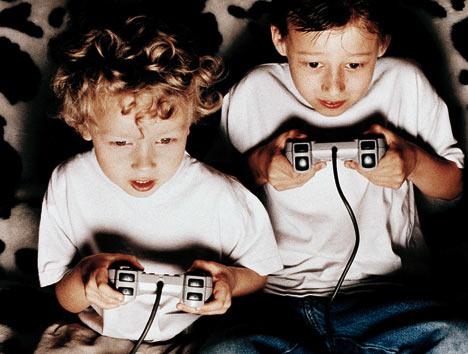 ur understanding of what false memories are and how they work. Elizabeth F. Loftus, a leading researcher on false memories, wrote on her website that false memories are “constructed by combining actual memories with the content of suggestions received from others.” The effect of false memories is well demonstrated in a study by Saul M. Kassin in which innocent participants were falsely accused of damaging a computer by pressing a wrong key. While the participants initially denied the accusation, when a confederate said that they had seen the person press the key, many participants “signed a confession, internalized guilt for the act and went on to confabulate details that were consistent with that belief.” The possibilities for abuse and unethical implantation of false memories in individuals mean that we must be aware of how this phenomenon works and what we can do to protect ourselves against it. I have commented on two blog posts, on “Symbol of remembrance triggers mass false memory” by Vaughan Bell, Ph.D., from Mindhacks.com and on “How Easily is Your Memory Manipulated?” by John M. Grohol, PSY.D., from the psycchcentral.com blog World of Psychology. These two posts look into the ethics surrounding the implantation of false memories, as well as the potential benefits and power of the manipulation of an individual’s memories. My responses to both of these blog posts can be found below and at their respective sites.
ur understanding of what false memories are and how they work. Elizabeth F. Loftus, a leading researcher on false memories, wrote on her website that false memories are “constructed by combining actual memories with the content of suggestions received from others.” The effect of false memories is well demonstrated in a study by Saul M. Kassin in which innocent participants were falsely accused of damaging a computer by pressing a wrong key. While the participants initially denied the accusation, when a confederate said that they had seen the person press the key, many participants “signed a confession, internalized guilt for the act and went on to confabulate details that were consistent with that belief.” The possibilities for abuse and unethical implantation of false memories in individuals mean that we must be aware of how this phenomenon works and what we can do to protect ourselves against it. I have commented on two blog posts, on “Symbol of remembrance triggers mass false memory” by Vaughan Bell, Ph.D., from Mindhacks.com and on “How Easily is Your Memory Manipulated?” by John M. Grohol, PSY.D., from the psycchcentral.com blog World of Psychology. These two posts look into the ethics surrounding the implantation of false memories, as well as the potential benefits and power of the manipulation of an individual’s memories. My responses to both of these blog posts can be found below and at their respective sites."How Easily is Your Memory Manipulated?"
Comment
I really appreciated this well written and informative post on false memories. I found it very interesting that false memories concerning food preferences could be implanted into “ordinary people.” By simply having the researchers remind the subjects of a childhood preference that they never had, the researchers were able to “noticeably alter” preferences for foods. Who knew that by telling an individual that they ‘got sick after eating a hard-boiled egg’ that they would exhibit “significantly less preference for and willingness to eat the food item.” I liked how you included the fact that this would work in a positive false memory implantation as well. It’s crazy to me that “subjects who were told that they loved asparagus as a child the first time they tried it ended up enjoying asparagus more than the control subjects…and [they] would pay more for asparagus at a grocery store!” This, however, brings us to the
 ethical line in which it is possible to manipulate a person’s/client’s behavior based upon suggestion and the implantation of false memories alone.
ethical line in which it is possible to manipulate a person’s/client’s behavior based upon suggestion and the implantation of false memories alone.I do, however, have a few questions about the study and its effects on every day people. You mention that you don’t know the generalizability of these findings, but do you think that this expands past food and into other realms in which marketing might be manipulating individuals? Can you think of instances in which this might be the case? While there may not be ramifications for this type of manipulation, do you think that people deserve some forms of protection from the implantation of false memories, given we have seen how effective they can be in controlling behavior? In any case, given that our memories can, in some cases, be very inaccurate and be subject to manipulation, perhaps more research should be done to determine the extent to which this is occurring in other facets of life.
"Symbol of remembrance triggers mass false memory"
Comment
Thank you for bringing the research report from Cortex to my attention. I have long been interested in false memories and how suggestions can influence the perceived memories of individuals. However, I had never really considered the possibility that a “symbol of remembrance” or in this case, the clock in Bologna Centrale station, would allow for a distorted collective memory. What I found most interesting was the percentage of people who had regularly seen the clock working fine, but falsely remembered that the clock was stopped at 10:25. That 92% of people believed he clock had always been broken, even if they had worked there or visited the train station on a daily basis, is mind-blowing to me. That “127 [participants] (79%) further claimed to have seen it always set at 10.25, including all railway employees,” is also shocking due to the fact that all railway employees (who saw the clock on a daily basis) were mistaken. It would seem that the widespread usage of the clock as a fixed-symbol of remembrance led to a collective memory distortion, even amongst those who should be very familiar with the object.
Something that I wish you had touched on more would be the general theory at work in this study. Given that these findings are interesting, what does it mean for the rest of us? How does this apply to the rest of the world? You did, however, mention a parallel case which focused on the London bombings in which “40% of British participants ‘remembered’ seeing it and produce ‘details’ of the coverage when asked.” These two studies together help our understanding of memory as a “reconstructive phenomenon.” From the actual study itself, de Vito writes, “An emotionally loaded symbol acts as post-event misleading information and obscures the real experience leading to widespread individual forgetting which results in a collective memory distortion.” With this in mind, do we take away from this study that we should be wary of overproduced, overrepresented symbols and that they may distort our memory? Does this work with non-emotionally charged symbols? I look forward to hearing your response!











